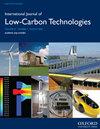水淬锰渣和粉煤灰超细矿物掺合料的制备及其在UHPC中的应用
IF 2.3
4区 工程技术
Q3 ENERGY & FUELS
引用次数: 2
摘要
本文采用水淬锰渣与粉煤灰1:1复合机械球磨法制备了S95级超细矿物掺合料,比表面积为714 m2/kg。7d和28d的活性指数分别为86.8%和96.3%。采用球磨法制备的S95超细矿物掺合料具有粒径小、比表面积高、活性高等特点。对于以细骨料为原料的UHPC,掺入水泥、硅灰等不同粒径的粉体,有利于提高颗粒级配,减小孔隙结构,提高压实性能。利用所获得的超细矿物掺合料进行正交试验,制备了超高性能混凝土。研究了不同因素对UHPC和易性、力学性能、水化热及微观结构的影响。结果表明:当硅灰掺量为10%、矿物掺量为10%、胶砂比为1.1、水胶比为0.17时,UHPC料浆的流动性可达261 mm, 7d和28d龄期抗压强度分别可达128 MPa和154.6 MPa。胶凝材料三维水化热释放量为139.8 J/g。在固废资源化利用方面,以水淬锰渣与粉煤灰配制的S95级超细矿物掺合料可替代10%的硅灰制备UHPC。既能解决水淬锰渣高附加值的利用问题,又能在一定程度上降低UHPC的制备成本。本文章由计算机程序翻译,如有差异,请以英文原文为准。
Preparation of water-quenched manganese slag and fly ash ultrafine mineral admixture and its application in UHPC
In this paper, S95 grade ultrafine mineral admixture was prepared by water quenched manganese slag and fly ash 1:1 compound mechanical ball milling to a specific surface area of 714 m2/kg. Its activity index was 86.8% at 7d and 96.3% at 28d. The S95 ultrafine mineral admixture prepared by ball milling has the characteristics of small particle size, high specific surface and high activity. Mixing with powders of different particle sizes, such as cement and silica fume, is helpful to improve particle gradation, reduce its pore structure and increase its compacting property for UHPC whose raw materials are fine aggregate. Ultra-high performance concrete (UHPC) was prepared by using the obtained ultrafine mineral admixture based on orthogonal test. The effects of different factors on the workability, mechanical properties, hydration heat and microstructure of UHPC were studied. The results show that when the silica fume content is 10%, the mineral admixture content is 10%, the binder-sand ratio is 1.1, and the water-binder ratio is 0.17, the fluidity of UHPC slurry can reach 261 mm, the compressive strength of 7d and 28d age can reach 128 MPa and 154.6 MPa, respectively. The hydration heat release of cementitious materials in 3d was 139.8 J/g. In terms of solid waste resource utilization, S95 grade ultrafine mineral admixture prepared by water-quench manganese slag and fly ash can replace 10% silica fume for the preparation of UHPC. It can not only solve the utilization problem of high added value of water quench manganese slag, but also reduce the preparation cost of UHPC to a certain extent.
求助全文
通过发布文献求助,成功后即可免费获取论文全文。
去求助
来源期刊

International Journal of Low-carbon Technologies
Engineering-Architecture
CiteScore
4.30
自引率
4.30%
发文量
106
审稿时长
27 weeks
期刊介绍:
The International Journal of Low-Carbon Technologies is a quarterly publication concerned with the challenge of climate change and its effects on the built environment and sustainability. The Journal publishes original, quality research papers on issues of climate change, sustainable development and the built environment related to architecture, building services engineering, civil engineering, building engineering, urban design and other disciplines. It features in-depth articles, technical notes, review papers, book reviews and special issues devoted to international conferences. The journal encourages submissions related to interdisciplinary research in the built environment. The journal is available in paper and electronic formats. All articles are peer-reviewed by leading experts in the field.
 求助内容:
求助内容: 应助结果提醒方式:
应助结果提醒方式:


